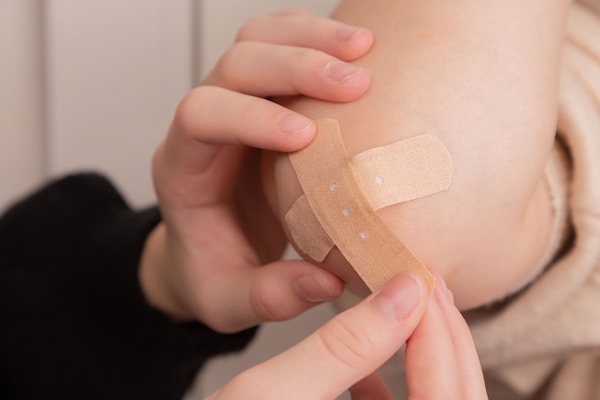Burns are notoriously painful when they're not treated the right away. Burns can be minor or major, and there are different degrees of burns, so it's crucial to be aware of what to do if you or a loved one gets burned. Check out this guide to learn more about the different types of burns and how to treat them.
What are the different types of burns?

A burn is an injury caused by dry heat, wet heat, electricity, radiation, or chemicals. Most burns are minor and can be treated at home. There are three general types of burns: first-degree, second-degree, and third-degree. A first-degree burn affects the outer layer of skin and causes redness, pain, and swelling. First-degree burns are typically treatable at home and don't scar. A second-degree burn affects the outer layer of skin and the layer of skin below it. It causes redness, pain, swelling, and blistering, affecting the outer layer of skin and the layer of skin below it. These are more painful burns and may require extra medical attention. A third-degree burn affects the deepest layer of skin. It causes white or blackened skin, numbness, pain, and swelling. For third-degree burns, immediate first-aid intervention is necessary.
You may want to check out first aid courses to prepare yourself to treat burns. First aid classes teach people how to respond to medical emergencies. These courses teach students how to treat burns, administer CPR, and control bleeding. First aid training teaches people how to identify medical emergencies and summon help. These courses are often available through community organizations, schools, hospitals, and private companies.
How to treat a burn?

When you suffer from a burn, the best way to treat it is to cool the area with running water for at least 10 minutes, which will help to reduce the pain and swelling. You may also want to apply a cold compress to the area, but avoid placing ice directly on the burn. If the burn is severe, seek medical attention. To help treat pain, Ibuprofen or Motrin is a common source of pain relief that can be found over the counter. These medications are a type of nonsteroidal anti-inflammatory drug (NSAID). When used, it helps to reduce inflammation and swelling. Once the pain goes down, gently wash the burn with mild soap and water.
When treating a burn, it is important to elevate the burned area above heart level when possible. This will help reduce swelling and pain. You can use a pillow, folded blanket, or other objects to elevate the area. If the person has a burn on their arm or leg, you can also wrap the elevated area in a cold compress to help reduce swelling. As the burn settles down, apply an ointment to promote the healing process. Then, use a clean and sterile dressing or gauze on the area. Try to avoid adhesive bandages at this stage—a loose dressing is ideal so the burn can get some air.
As the burn begins to heal, be sure to wash the area often. When you have a burn, the area is susceptible to infection, so showering helps keep the area clean and free of bacteria. Additionally, showering can help reduce swelling and discomfort. Keep the burn out of the sun to prevent scarring by covering the burn with clothing and protecting it with sunscreen. Remember that severe burns tend to scar regardless of how well you take care of them, but taking these steps helps ensure your scarring is minimal.
Getting burned is a painful experience, but with the right knowledge and care, you can help treat it effectively. Keep these tips in mind the next time you have to handle a minor or severe burn.






